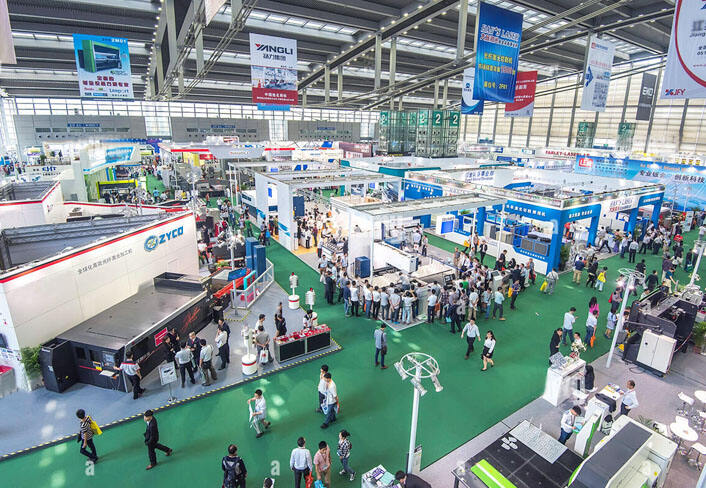En CNC kantpress er en av de mest essensielle og skremmende maskinene som brukes til å bøye metallplater i forskjellige vinkler og former. Denne maskinen er mye brukt i fabrikker og verksteder hvor metallbearbeiding foregår. Systemet er laget av tre hovedkomponenter en hydraulisk presse, kontrollenhet og bøyeverktøy.
Nebbdelen av den hydrauliske pressen påfører en enorm kraft på metallplaten for å bøye den i hvilken som helst form vi ønsker. Det er bøyeverktøyet som former metallet. Den samarbeider med pressen for å lage bøyene. Kontrollsystemet er ekstremt viktig, fordi det ikke vil være mulig å bruke en passende mengde kraft fra pressen. Det betyr effektivt at maskinen bøyer metallet riktig og konsekvent hver gang.
CNC kantpresser Transformasjon av metallbearbeiding
For lenge siden før CNC-kantpresser ble populære, var bøying av metallplater ekstremt arbeids- og kompetansekrevende for fagfolk i metallbearbeiding. De ble tvunget til å bruke verktøy for hver oppgave; alt måtte gjøres for hånd, noe som var utmattende og ofte resulterte i feil. I andre tilfeller ville ikke metall bøye seg riktig og arbeiderne måtte begynne på nytt.
CNC kantpresser gjorde bøyingen av metall mer enkel og presis. Ha et datastyrt kontrollsystem som du kan programmere temaer slik at de er i stand til å lage perfekte bøyninger hver gang. Dermed gjør det metallarbeiderne i stand til å fremstille produkter av høyeste kvalitet uten å angre på å ha gjort feil. Denne gangen gjør maskinen alt det harde arbeidet og hjelper til med å spare energi og spare tid.

CNC kantpresser — bøying gjort enkelt og nøyaktig
Tilgjengelighet av høykvalitets arbeids CNC kantpresser er presisjonsmaskineri. De bruker høyverdig teknologi som lasere og sensorer for å hjelpe til med å måle vinkelposisjonen til metallplaten nøyaktig. Denne teknologien sikrer at der hvor bøyeverktøyet skal gå, går det akkurat der. Dette betyr at bendene er nøyaktige og jevne, noe som er svært viktig ved metallbearbeiding.
I tillegg kan CNC kantpresser utføre mange oppgaver uavhengig, noe som reduserer behovet for manuell arbeiderhjelp. Dette betyr at operatører kan være trygge på at maskinen vil gjøre de riktige bøyene hver gang, noe som sparer tid og øker produktiviteten. I stedet for å måtte gjøre én oppgave, kan arbeidere la den stå og jobbe med noe annet mens maskinen gjør sitt, noe som gjør det enklere gjennom en prosess.

Historien om kantpresser
Kantpresser har eksistert ganske lenge, men teknologien har utviklet seg betydelig siden de først dukket opp på begynnelsen av 20-tallet. Til å begynne med var de mekaniske, noe som gjorde at det ikke var annet enn gir og spaker for å bøye metallet. Disse tidlige maskinene hjalp til i bøyeprosessen, men de var ikke nøyaktige nok for nøyaktigheten som metallet måtte bøyes med.
Etter det ble hydraulikk implementert. Det ble mer tilgjengelig for metall å bøye med disse systemene, og resultatene var alltid presise. CNC kantpresser kom noen tiår senere, og fant veien til markedet på 1970-tallet. Disse maskinene var et stort gjennombrudd, da de endret linjen med metallarbeid. De ga nesten perfekt nøyaktighet og ensartethet som gjorde hele forskjellen i å bøye metallplater.
Kantpresser i fabrikker: CNC for å jobbe smart
CNC kantpresser finnes ofte i fabrikker der det kreves rask, nøyaktig produksjonsbøying av store partier metallplater. Disse maskinene er utformet for å fungere i produksjonsmiljøer, hvor effektivitet er avgjørende. Det fører til mindre feilmargin, noe som betyr at avfallet ditt vil bli betydelig redusert - CNC kantpresser gir presisjon og konsekvent bøying. Det sparer penger og materialer, i forlengelsen.
Bortsett fra dette blir disse maskinene enklere enn noen gang for operatører å programmere på grunn av de datastyrte kontrollsystemene. Dette betyr at de kan konfigurere maskinen til å utføre nøyaktig oppgaven uten regelmessig overvåking. Ved å eliminere behovet for manuell intervensjon, forbedres ikke bare effektiviteten, men arbeiderne kan også rette oppmerksomheten mot andre funksjoner med høy verdi.












 EN
EN
 HR
HR
 CS
CS
 DA
DA
 NL
NL
 FI
FI
 FR
FR
 DE
DE
 EL
EL
 HI
HI
 IT
IT
 KO
KO
 NO
NO
 PL
PL
 PT
PT
 RO
RO
 RU
RU
 ES
ES
 SV
SV
 TL
TL
 ID
ID
 SR
SR
 SK
SK
 VI
VI
 HU
HU
 TH
TH
 TR
TR
 AF
AF
 BE
BE
 HY
HY
 KA
KA
 UR
UR
 BN
BN
 MN
MN
 KK
KK
 SU
SU
 TG
TG
 UZ
UZ
 KU
KU
 KY
KY




